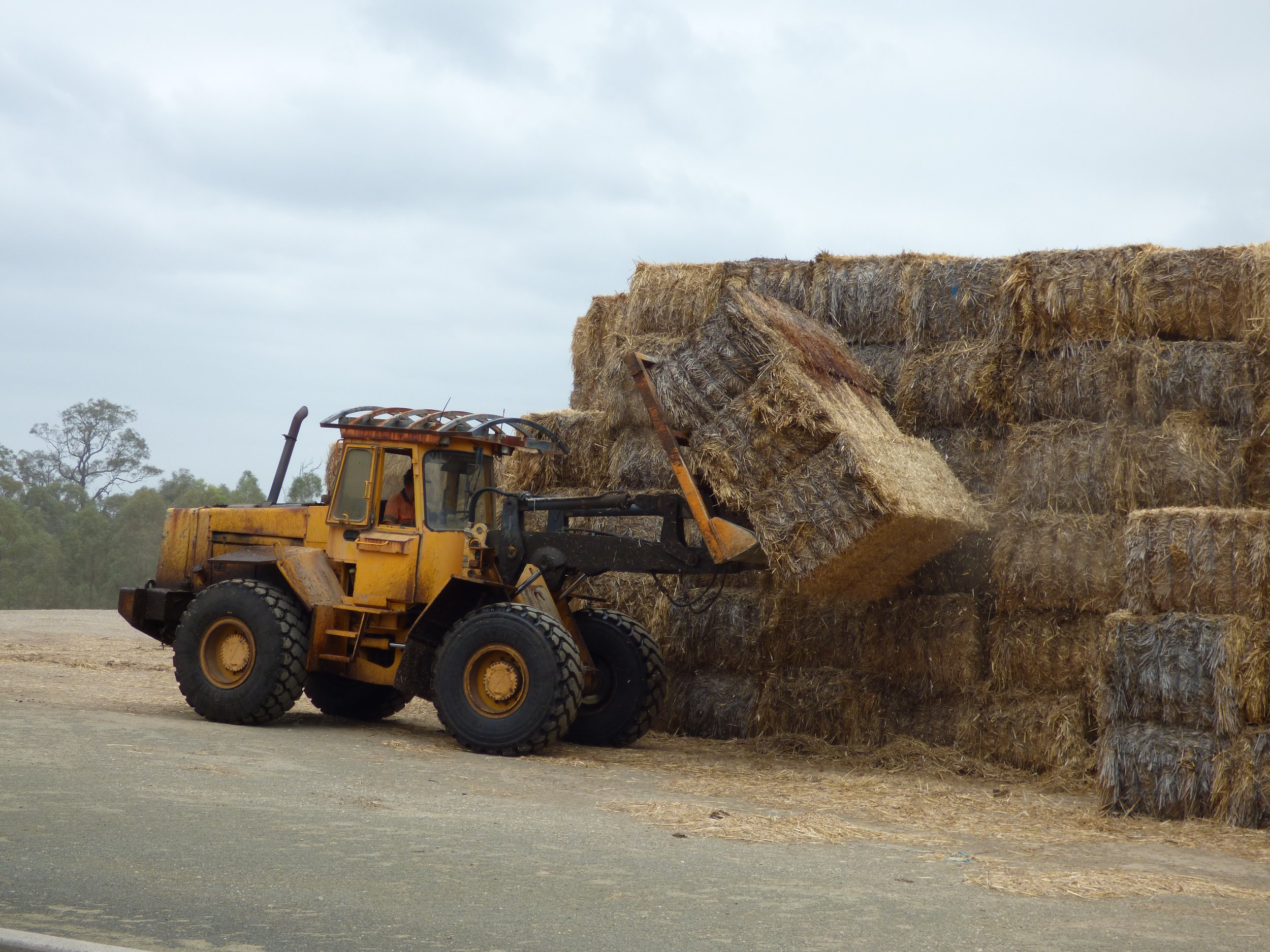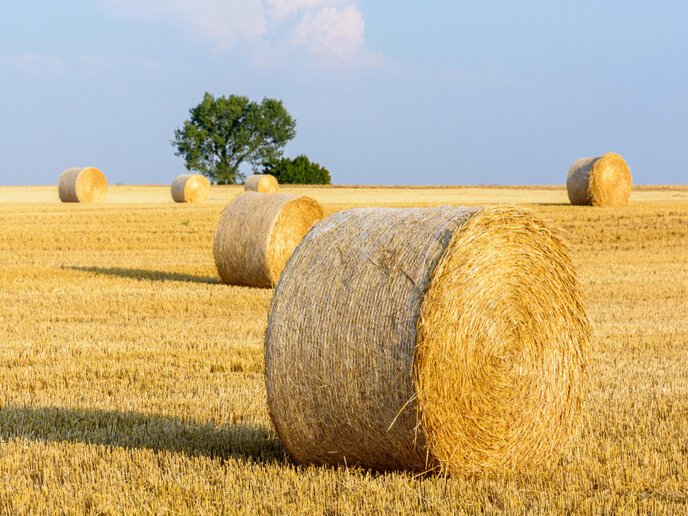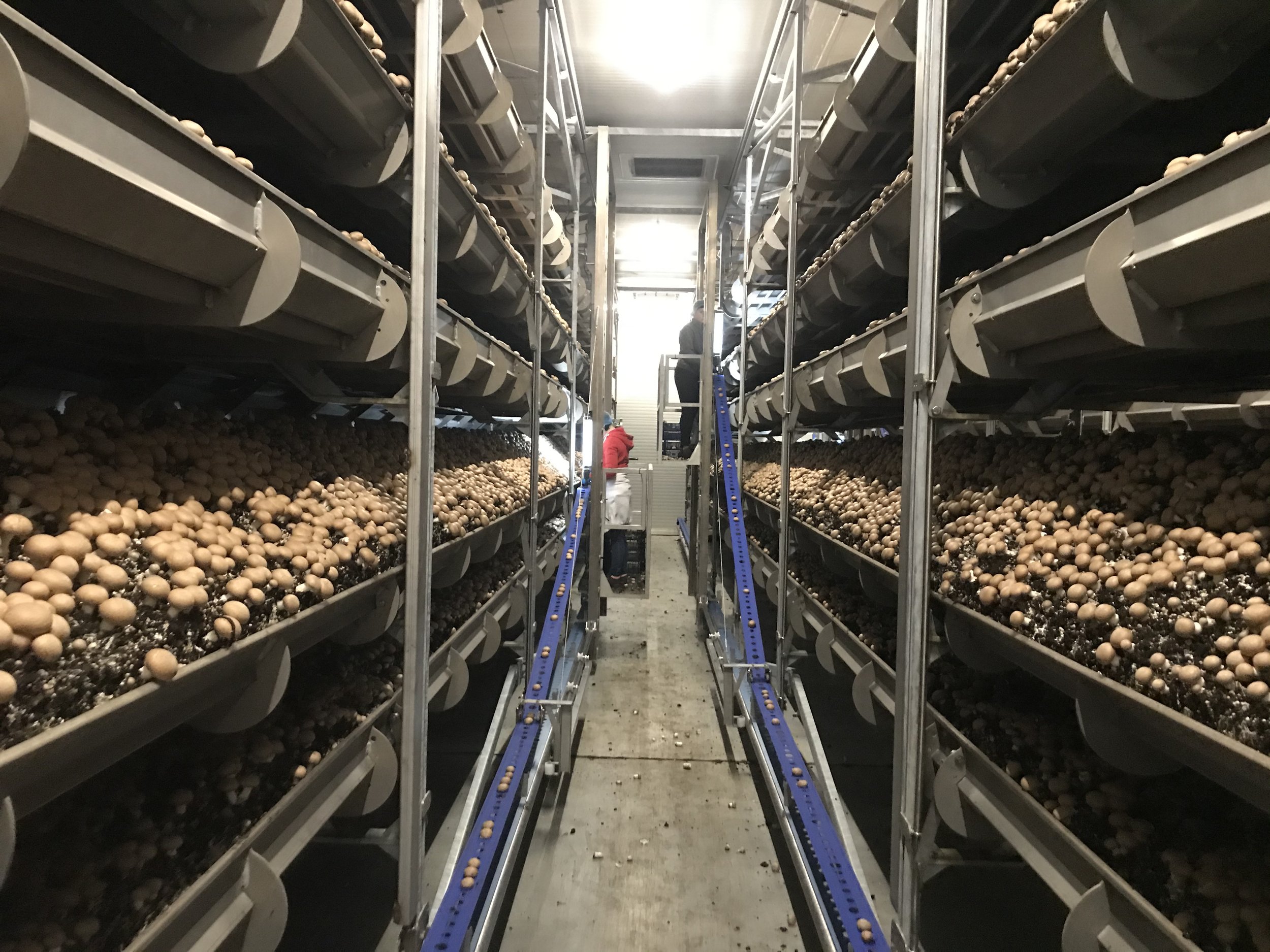MushroomLink Bulletin August 2023
In this edition:
Feature: The future of mushroom packaging
Feature: A lifecycle analysis for the mushroom industry
Webinar: A scoping study to review fungi-based global innovations
Podcast: Geoff Price and the American mushroom industry - part one
Resource: Mushroom Virus X Syndrome
Event: November webinar - save the date
MushroomLink Bulletin July 2023
In this edition:
Feature: Making a vitamin D claim.
Feature & webinar: Spent mushroom substrate
Feature: Improving the food industry menu with mushrooms
Podcast: Going Dutch - New mushroom technology from the Netherlands
Resource: Troll doll fact sheet
Event: November webinar - save the date
MushroomLink Bulletin June 2023
In this edition:
Winter magazine out now
Feature: Phorid ecology and management
Food safety FAQ’s
Podcast – Revisit our podcast on risk management
Marketing: Mushroom meat tray
MushroomLink Bulletin May 2023
In this edition
Free service: Order your free Smart Mushroom testing kit now
Feature: Bacteriophages in compost – friend or foe
Feature: Sustainable pest and disease management
Podcast: Catchup with the team behind Mycionics
Webinar: Recycling SMS for fertiliser in a circular economy
MushroomLink on the road: Visit us at Hort Connections
MushroomLink Bulletin April 2023
In this edition:
Feature: Breeding a better mushroom
Webinar: MU21006 - Recycling SMS for fertiliser in a circular economy
New Project: Mushroom supply chain
What’s new at the MLMRU
Mushroom Link resources – new fact sheet Nitrogen in compost
MushroomLink Bulletin March 2023
In this edition
Autumn 2023 magazine out now
Feature: Horticulture meets robotics meets AI
Interview: Geoff Price from Giorgi Mushrooms
Podcast: CSIRO researcher Dr Damien Belobrajdic and nutritionist Dr Falvia Fayet-Moore (NRAUS) discuss the narrative around mushroom nutrition
Marketing update: 70,000 shoppers engaged with the in-store sampling program
Mushroom Link resources
Mushroom Bulletin February 2023
In this edition:
Mushroom farming in Ukraine
Developments in mushroom harvesting
Presentation – Gordon Rogers on the MLMRU and PCR Disease Testing
Podcast – Jack Lemmen in new developments in harvesting
MushroomLink resources
MushroomLink Bulletin January 2023
In this edition
Alternative casings and a sustainable mushroom industry
The Marsh Lawson Mushroom Research Centre
Webinar – Food safety certification: watch the recording
Podcast – Ralph Noble comments on the future of the industry
Smart Mushroom in the news
In case you missed it
MushroomLink Bulletin December 2022
In this edition:
MushroomLink summer issue out now
Safe mushroom certification
Introduction to food safety for mushroom farm workers
Dr Jenny Ekman at the AMGA conference
New factsheet – safe chemical storage
Upcoming webinar - Food safely certification FAQs with Clare Hamilton-Bate
Mushroom Bulletin November 2022
In this edition:
MushroomLink Summer edition out soon
Feeding mushrooms – the ins and outs of nitrogen in mushroom compost
What's new in mushroom compost biology? - Dr Michael Kertesz
Roland van Doremaele - Efficient harvesting systems part one
MushroomLink Survey
Hort Innovation Mushroom Fund annual report
AGORA
Mushroom in store sampling
Hort Innovation Annual Fund report 2021/2022
What happened in the Mushroom Fund last year?
The 2021/2022 annual report for the Mushroom levy funds is out now.
The report covers what has been delivered this year, how the R&D levy has been invested over the year and how the fund is being managed.
A list of minor use permits for the potato industry, current as of the 15th of August 2022, is also provided.
MushroomLink Bulletin October 2022
In this edition:
Fact sheet: Mushroom nutrition and health messages
Coming soon: AMGA conference podcasts and videos
September marketing snapshot
Collaborative Marketing Workshop with the Mushroom Industry
Hort Innovation Mushroom Fund annual report
Poultry litter – more than just a nitrogen source
Mushroom Production Waste Streams - Novel Approaches to Management and Value Creation
Pest and disease news alert
Collaborative Marketing Workshop with the Mushroom Industry
By Emma Day, Marketing Manager HIA
Hort Innovation’s commitment to working more closely with the mushroom industry in matters relating to marketing came to realisation in early September, with the first co-design workshop. Earlier in the year the AMGA were invited to identify three to four industry representatives to be a part of the co-design panel.
The outcomes of the workshop will inform the development of evidence-based marketing strategies for 23-26, and an annual marketing investment plan for F23, ensuring that these plans are built on robust analysis, contain actions that clearly link to demand creation and facilitate transparent measurement and evaluation of actions and impact.
The workshops took place in Sydney, with representatives from the Mushroom Industry joining HIA Marketing, Data and Insights, and Industry Strategic Partnership personnel for two busy and productive days to jointly develop the marketing plans. The workshops were run by Jane Smith and Kylie Hudson, General Managers Marketing, with presentations from many of the HIA Mushroom team.
The Mushroom Industry was represented by Leah Bramich, GM AMGA, Kyle Davies, Marland Mushrooms, Georgia Beattie, Bulla Park, Tim Archibald, White Prince, with apologies from Elisa Siliato from Costa.
Day One focused on a big data download and share. Presentations were given on the broader market context of consumer’s lives, industry feedback on important issues, the retail and trading environment in which we all operate, the consumer and shopper, needs and occasions, and a FY22 activity evaluation. As a group we then prioritised our learnings and implications and agreed on the focus for our plan and who we should target.
Day Two we regrouped and then defined the big shifts required from consumers to grow the Mushroom category and set our vision and goals according to what our category would stand for in the minds of consumers. With clear objectives, we could define the key strategic pillars which will underpin the activities arising from this marketing plan.
A brainstorming session resulted in a detailed one-year plan, as well as a more future-looking horizon plan. This was followed by the business of budgeting and how we might allocate the marketing funds for year one.
With all this valuable input, the HIA marketing team will now create the detail of the plan around our agreed vision, goals, and strategic pillars. The plan will be presented to the SIAP on 20 September for approval.
In the meantime, the first part of the plan details the 12 key facts gained from the data download on day one. These insights are the key pieces of data that drove our decision making as a team, and we thought worth sharing with the industry.
MushroomLink Bulletin September 2022
In this edition:
FEATURE: Spring MushroomLink out now
MARKETING: September marketing news
RESEARCH: Conference speaker spotlight
WATCH: AHR webinar - spent mushroom compost as casing soil
GROWING THE FUTURE TOGETHER
The 2022 AMGA conference
By Dr Jenny Ekman
At the end of October, the mushroom industry will meet in Adelaide for the first industry conference in several years. With a diverse speaker program, the conference provides a unique opportunity to learn about new advances in research, farm practice and marketing initiatives, as well as offering great networking opportunities.
This year, the AMGA conference will host suppliers, growers, farm owners and well-respected national and international speakers.
Following farm tours on day one, day two of the conference (Thursday 27 October) is dedicated to
international speakers. A wide range of presentations will focus on topics critical to the ongoing sustainability of the industry, including harvest mechanisation, new variety development and alternative casing materials.
One of the great range of international guests are profiled below.
Picking the best from harvest practices
Mushrooms are already a technology-intense crop. More than any other, they rely on precise control of
substrate, climate, nutrition, and irrigation. Many aspects have been mechanised, with computer controlled compost production, bulk phase 3 compost, automatic casers and fillers and many other technological aids.
However, the most important part of cropping – harvest – is still entirely done by hand. Many growers were already struggling with rising labour costs before COVID-19.
In recent months, the difficult situation resulting from numerous unfilled positions has been exasperated by illness-derived labour shortages. Added to the major cost of labour to growers is now the almost daily worry of worker availability.
For more than 30 years engineers have been trying to develop a robotic mushroom harvester. This is no easy task. Mushrooms need to be picked gently, trimmed appropriately, and placed into grades according to size and shape. A firm touch or sharp edge can easily disfigure or bruise mushrooms. Furthermore, as mushrooms are not regularly spaced on the beds, picking single mushrooms from clustered groups poses another special challenge.
Initial robotic harvester designs had limited success. Silsoe Research Institute developed an early robotic harvester in 19931. A suction cap attached to each mushroom, which then twisted and lifted the mushroom. While it could locate 84% of mushroom targets, only 57% were picked successfully. Overlapped or closely packed mushrooms were the most difficult to pick.
Technology has come a long way since the 1990s, and so has the search for robotic mushroom harvesting. A quick Google search reveals at least 10 companies (and universities) involved in developing commercial harvest technology for mushroom farms.
Any such technology is inevitably going to be capital-intensive. A potentially less expensive approach is to develop ways to increase efficiency of human pickers. This may mean using single layer beds, or moveable and/or tilting trays.
One company working on both options is GTL Europe. The company was initially formed in 1994 by Jack Lemmen as a tiny start-up in a shed beside his parents’ house. In 2013 he merged with three companies: Geraedts, Thilot and Lemmen. This has given the larger group expertise in air handling and control, composting and growing equipment, and waste management.
GTL Europe is now a globally recognised company involved in all levels of mushroom cultivation. It offers solutions to compost producers and farms including construction design, climate control systems, machinery, and automation solutions.
Jack Lemmen will be presenting at the 2022 AMGA conference on some of the latest developments in automation on mushroom farms. According to Jack, “The tilting shelves system was just the beginning. It is really the starting point towards a fully integrated harvesting system. Technological developments such as robotics and artificial intelligence are creating an array of opportunities to further optimise the harvesting process.”
Huge improvements have been made in scanning, grading, and packing equipment for many fresh horticultural industries. Perhaps it is time for a great leap forward for mushrooms. Jack is certainly well qualified to give insight into what new technologies are becoming available, and potential benefits for the mushroom industry. It is certain to be a fascinating subject.
This is an excerpt for the MushroomLink Spring 2022 magazine, click here to read the full article and publication
MushroomLink Bulletin August 2022
In this edition:
Highlights of Ireland’s mushroom research
Collaborative mushroom marketing
The microbiotic interactions that support mushroom growth
Catch up on our webinar with Dr Anita Stegoska-Needham
Prof Kertesz interviewed by 2GB’s rural reporter
Andrea Ucello harvesting mushrooms on Ireland
MushroomLink Bulletin July 2022
In this edition:
New Magazine coming soon!
Food safety testing - get your samples in!
Marketing update
Latest in R&D
Watch and Listen
News and Events
The Industry testing program: Rebooted!
Written By: Dr Jenny Ekman
TESTING TO PROVE, OR TESTING TO IMPROVE?
Among the seemingly endless list of compliance requirements that all fresh produce businesses face, verification testing is often questioned from both a cost and value perspective. “Why do we have to test” is a common question, and for most, the answer would be “because our customers say we have to”. While the answer is not wrong, the driver for compliance is misguided.
Anyone in the business of growing and supplying food to consumers understands that consumers trust the food they buy is safe and rely on the integrity of both process and product.
The seemingly endless range of testing for heavy metals, chemical residues and microbial contamination won’t itself make the product safer. However, it will provide assurance and surety that the processes followed deliver a product that is free from residues and safe to eat, factors that are critically important at a business, industry and ultimately customer level.
The Testing Program
For some years now, the Australian Mushroom Growers’ Association (AMGA) has organised competitively priced testing of fresh mushrooms and inputs (water, compost) for members. The testing commenced in the early 2000s, with the program including all the microbial, chemical residue and heavy metal tests required by food safety certification programs.
As well as providing keen pricing, the advantage of using the industry program is that all test results are reviewed and reported back accompanied by an explanation of what they mean. In other words, whether any of the results raised concerns and what should happen next if they did.
The de-identified results gathered through the program over the last 15 years are also a valuable resource for the industry as a whole. For example, from 186 tests of fresh mushrooms in the previous five years, there has been only a single detection of E. coli (which was <100 CFU/g), no detections of Salmonella spp. and no detections of Listeria monocytogenes.
Such data provides objective, defensible evidence that growers are following good practices and mushrooms are safe to eat.
Until now, the on-request testing procedure was that growers downloaded a form from the AMGA website, filled it in and sent it back to the Association. A request would then be made for a test kit to be sent to the grower from the lab. The grower took the samples, filled in the analysis request form, and returned it to the lab for testing. While this has worked well enough, it certainly added unnecessary steps in the process, an extra layer of complexity and, therefore, an opportunity for error.
Now, with the support of levy-funded project MU20000 - Extension and Adoption for Food Safety, Quality and Risk Management, every mushroom business can conduct one full suite of chemical and microbial tests each year – for FREE.
The testing on fresh mushrooms includes chemical residues (CR006), heavy metals (ESM-02) and microbial contamination (E. coli, Salmonella spp and L. monocytogenes). The program also includes a water test for E. coli (CFU/100ml).
This industry-wide service is designed to encourage verification testing to support individual businesses. It will also strengthen the pool of de-identified test data available, helping identify and manage potential risks.
The Process
Simply email your request to the Food Safety (FS) project team, and the kit will arrive in the mail accompanied by instructions, a pre-filled analysis request form and a return pre-paid satchel.
This new system also means that absolute confidentiality is ensured regarding the results. Only the FS project team will know which grower code links to which individual farm.
Again, results will be accompanied by an interpretation of what they mean. For efficiency, testing through this program will be available three times a year. The first round of free testing will commence at the start of April. The following testing rounds will be in August and December.
Email Dr Jenny Ekman to receive your FREE chemical, microbial and heavy metal test kit, helping the industry demonstrate the high standards of Australian mushrooms and providing you with the data you need for an audit.
The current testing program arrangements will continue for those businesses who need to test other inputs or test more frequently. This will now follow the new and improved administrative process.
An updated cost schedule will be available on request.
Lessons from chemical and heavy metal testing
Just like forensic investigators on TV, chemical residue or heavy metal test results can provide vital information on inputs such as compost and compost ingredients, supplements and chemicals.
When residues are detected, they are usually well below the maximum residue level (MRL). However, when there are detections, it is worth considering at what percentage of the MRL they are and reviewing factors such as inputs, use patterns and application rates. this approach ensures total control of products and processes, in the most cost-effective way.
Lessons from microbial testing
Close monitoring of microbial test results can often pre-empt an issue before it becomes a problem. Indicator organisms detected at low levels in products or inputs can help identify issues with infrastructure, cleaning and hygiene practices.
A problem understood is a problem solved, and testing produces the opportunity for this understanding
This article was originally published in the 1st issue 2022 edition of the Australian Mushrooms Journal
MushroomLink Bulletin June 2022
In this edition:
Introduction to MushroomLink
Marketing update
Latest in R&D
Watch and Listen
News and Events
Reset and Refresh – towards better collaboration between Hort Innovation and industry
In mid-last year, the Seftons review was commissioned to examine the working relationships between industry peak industry bodies (PIBs) and Hort Innovation. The review identified a number of issues, particularly relating to governance and communication.
As a result, a working group was established consisting of representatives from the PIBs, the Hort Innovation board and the Commonwealth government. The working group has been developing a new framework for collaboration between industry and HIA.
On 14 and 15 June mushroom industry representatives Geoff Martin, Nick Femia and Leah Bramich took part in two “Reset and Refresh – Roles, responsibilities and advice mechanisms” industry workshops. The aim was to find ways to work together better, particularly in terms of developing advice mechanisms for both research and development and marketing and promotion.
Discussion was constructive and focussed on raising the quality of outcomes for all industry participants. Hort Innovation has committed to communicating clearly and regularly with industry and is currently considering how best to act based on industry feedback. The outcome should be maximised returns on investment for all levy payers.
According to AMGA General Manager Leah Bramich “This was an extremely important and positive first meeting, with Hort Innovation and industry working together collaboratively and transparently. I am really pleased to see this important first step towards meaningful change and a better future”.
Access the HIA report on this initiative or download the DAWE Best Practice Guide to Stakeholder Consultation.





































